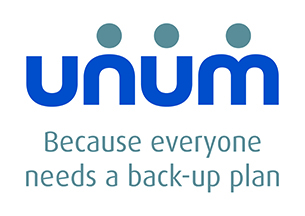This article has been supplied by Unum.
Key points
- Workplace wellbeing is playing an increasingly important role in helping employers to attract and retain staff.
- The effectiveness of a health and wellbeing strategy relies on employers factoring the make-up of their workforce into their strategy design.
- Employers can benchmark competitors’ benefits to help generate initiatives to fill any support gaps in their own organisation.


The modern workforce increasingly expects more from its employers. A buoyant job market means businesses must work harder to attract and retain the best staff, and workplace wellbeing is playing an ever more important role in this.
Our research has allowed us to gain a deeper understanding of employee wellbeing and how to engage and motivate employees. We have found that, broadly speaking, workplace wellbeing falls into three areas: prevention, intervention and protection.
In practice, putting an effective health and wellbeing strategy in place varies enormously between employers, but there are some key steps that every business can follow.
Understand existing strategies
Employers should run a health and wellbeing audit for their business that considers prevention, intervention and protection. They should research their figures, from sickness absence records to engagement surveys, and understand how their organisation manages key issues, such as stress and mental wellbeing. They should also identify their senior management wellbeing champions, because they will need them on board.
Communicate benefits support effectively
Employers should measure employees’ awareness levels of their existing benefits and wellbeing strategy, and measure the effectiveness of their communications channels, because any gaps in provision could cost them money. Once employees understand the value of their benefits, they appreciate them far more.
The effectiveness of a health and wellbeing strategy relies on employers factoring the make-up of their workforce into their strategy design. They should, for example, consider remote employees, as well as staff access to technology and communal areas.
They should not rely on one channel to get their message across. For example, email is simple, but ineffective when used alone. Line managers can prove invaluable in helping employers to communicate the detail and value of their health and wellbeing benefits.
Identify what engages and motivates staff
Employers should ask staff what motivates them. The answer is rarely simply spending more money. Pulse surveys, suggestion boxes and focus groups can help identify what health and wellbeing support employees really want.
Employers also need to educate staff about their options, so they can make an informed choice.
As part of this exercise, employers should benchmark their competitors’ health and wellbeing support, because this may help to generate initiatives with which to fill any support gaps in their own organisation.
Review corporate culture
Many studies show strong links between wellbeing, trust and engagement, which is often a predictor for business performance. Employers should therefore identify any barriers in their corporate culture. This cannot be changed overnight, but employers can show commitment to staff by making workplace improvements to foster greater trust and motivation.
Reviewing their flexible-working policies is often a good starting point for employers. This means they should consider giving staff the autonomy and ability to work in a way that suits them, because this can lead to greater employee motivation and higher levels of wellbeing.
Gain buy-in from finance
Wellbeing does not have to break the bank, but employers will need support from the board to implement an effective strategy. A good starting point is for the employees responsible for health and wellbeing to introduce the subject as an agenda point at their next leadership meeting.
They should use their audit findings to clearly demonstrate where their strategy is having a detrimental effect on their organisation’s financial and competitive standing, with the numbers likely to help stamp out the idea that wellbeing is in any way fluffy.
Finally, employers should not forget to future-proof their strategy.
The rise of an ageless and multi-generational workforce will require wellbeing strategies that offer flexibility and avoid a one-size-fits-all approach. Also, the increased connectivity of employees who are available 24/7 requires employers to think about how they can ensure their workers take regular breaks to recharge their batteries and avoid burnout.
Develop a clear implementation plan
Many of the best plans fail at the implementation stage. Employers cannot expect staff and leadership to immediately understand their goal, so they should build an implementation plan that provides regular communications with all stakeholders and educates staff.
Ultimately, employers must commit to work on, and communicate, their health and wellbeing strategy on an ongoing basis, because this is not a one-off project.
Joy Reymond is head of rehabilitation and health management services at Unum